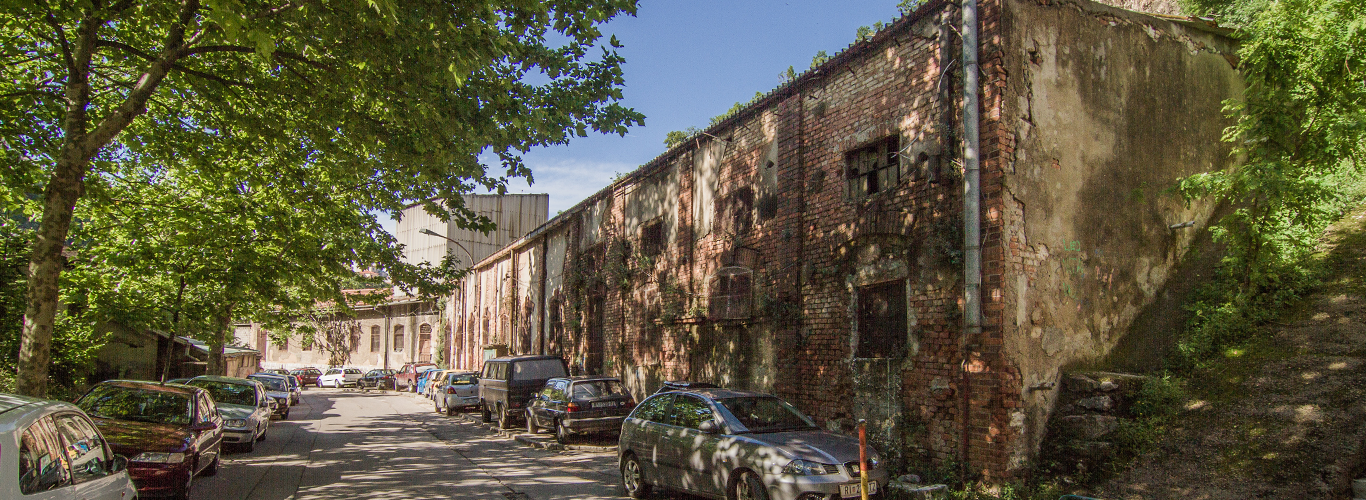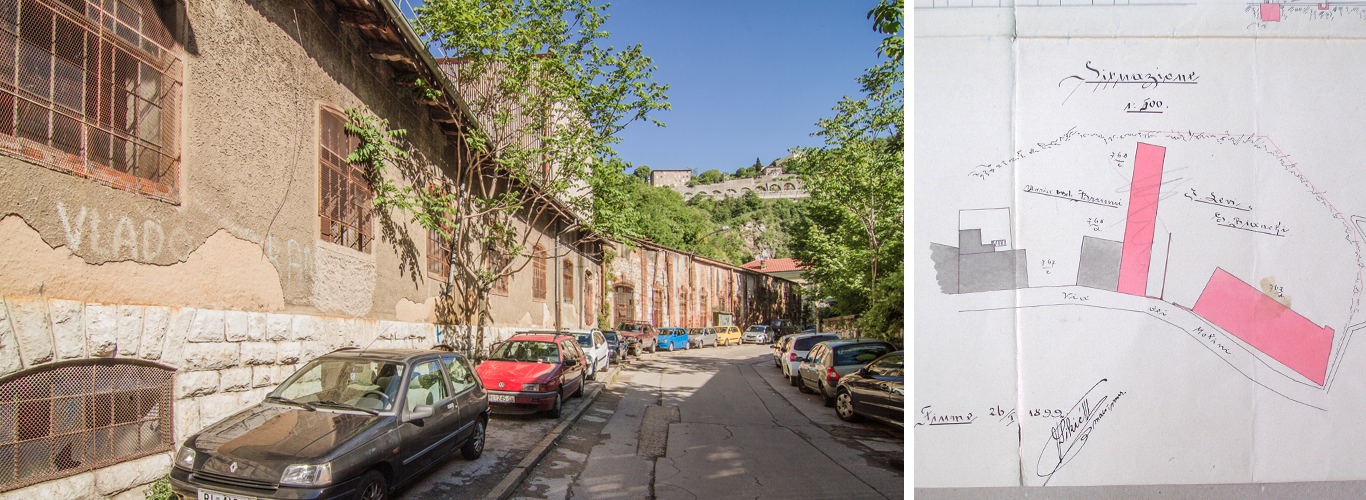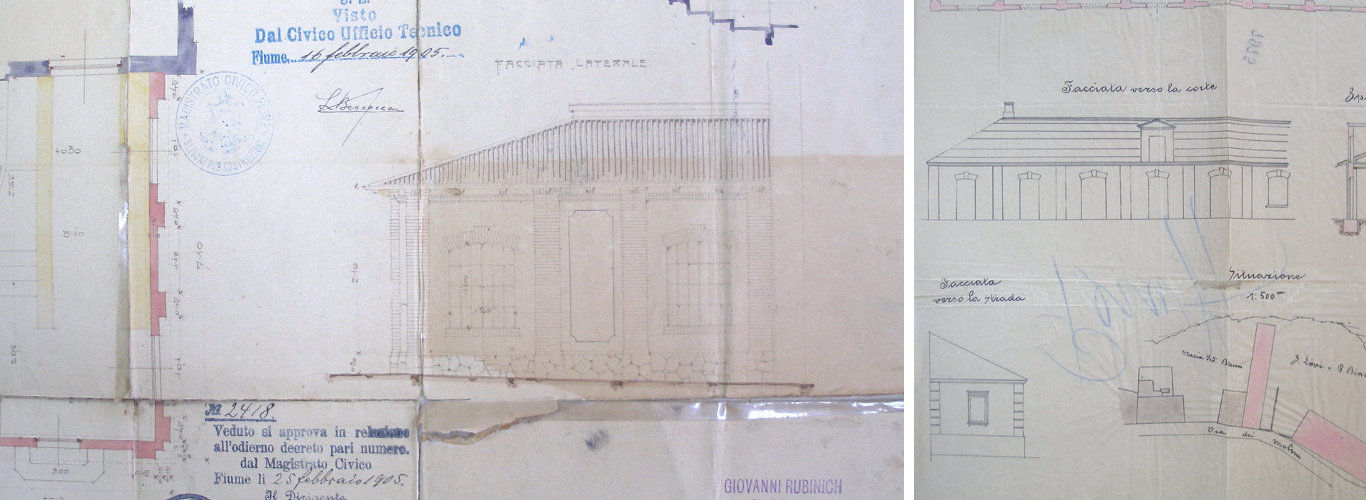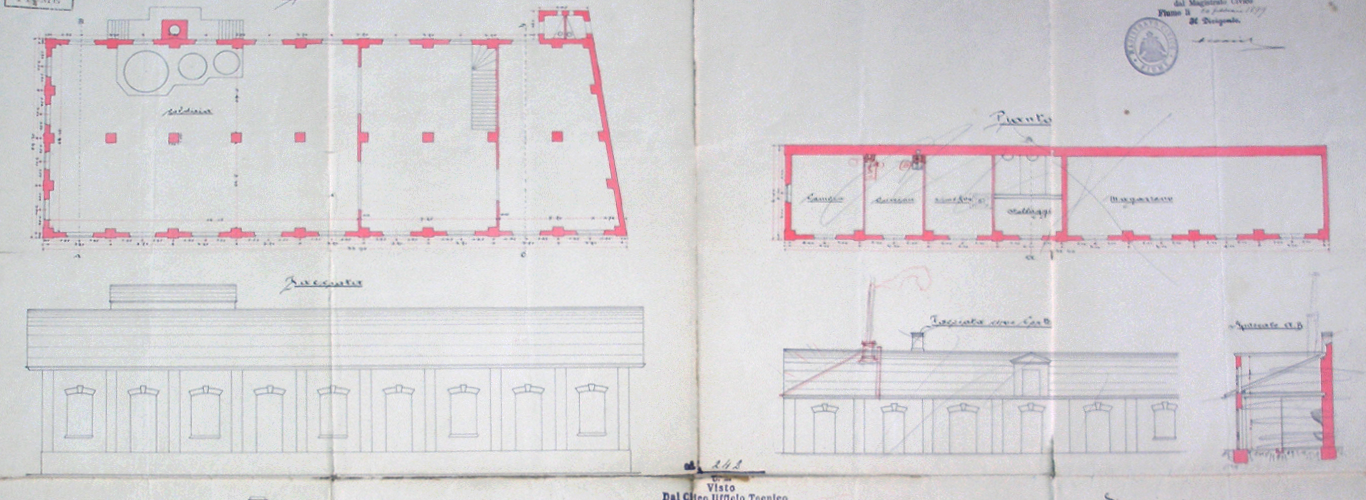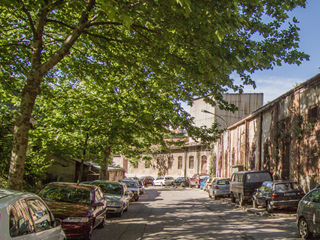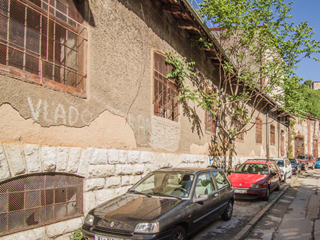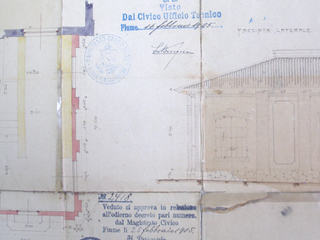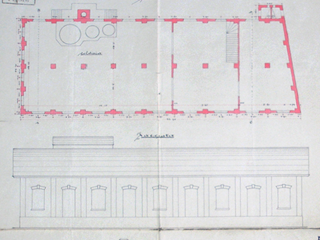The Levi & Bianchi Soap Factory
address: Vodovodna Street 30Period: Historicism
Kind: Immovable material heritage
Century: 19
Year: 1890
Purpose: industrial
The Levi & Bianchi Soap Factory started with production in the second half of the 19th century. The plant was built on the Bruni building ground. One of the complex facilities has been preserved to this day and is located at Vodovodna Street no. 39. The factory operated for several decades; hence, it is no surprise that it had several phases of construction from the 1880s up to 1938, when the last modifications were made. This was an entire complex, located at the end of Vodovodna Street on a plateau beneath the Kalvarija hill, stretching all the way to the road passage, the former Via dei Molini, next to the Rječina river. The oldest drafts, stored in the State Archives in Rijeka, date back to February 1899, and were signed by the architect Šikić.
The upgrade of the factory continued in 1905, when the steam boiler facility was built. The architect Giovanni Rubinich was hired for this project. Archival sources never emphasized the location of the building, so the question is whether Rubinich’s project had ever actually been implemented. A great intervention on the factory complex was made in the 1920s, when the factory, then owned by Silvio Silviani, got the distinctive name Fabbrica Fiumana di Saponi, Glicerina, Soda cristallizzata e prodotti Grassi. Construction works on the new wing were carried out according to the project of Luigi Luppis.
The Levi & Bianchi factory complex consisted of a series of buildings of industrial and residential character. To date, very little has been preserved from the former plant facilities. The Metal Foundry Ardens d.o.o. is now operating in the most recognizable, but also dilapidated part of the complex. This object is considered as cultural heritage and, in official documents of the Conservationand Restoration Department of Rijeka, it is characterised as a building in very poor condition. It is a longitudinal two-storey building with recognizable historicist elements. It is safe to assume that originally there were two buildings, which were later interconnected. Such an assumption can be made owing to the design of the façades of the buildings facing Vodovodna Street. The decor of the older part of the building is clearly visible; it is divided by a series of large windows with semi-circular brick gables and a prominent central keystone. The dynamics of this part of the façade is achieved by brick pilasters placed between the windows and giving a vertical dimension to this low-storey building. This is probably the oldest part of the complex, designed by Franjo Šikić in 1899. The second part of the façade was designed later, in 1925, according to the plans of engineer Luigi Luppis. The preserved drafts indicate that this facility should have been a representative three-storey house with a ground floor. Given that today, on this location, there is only a single-storey house, it is likely that the project was never fully realized or that the two upper floors were built, but later removed. What is certain and visible from the drafts is that this part of the building was conceived as an architectural continuation of the existing part of the factory. This is reflected in the decoration of the façade, which is simpler, yet stylistically coordinated with the existing historicist elements by Šikić.
Valorization:
The building of the former Soap Factory has been preserved in a very poor condition until today. It contains a metal foundry. Conservators-restorers protected it.
Bibliography:
DARI, JU 51, kutija 113.
Dubrović, Ervin, Počeci uspona, u: Riječki torpedo-prvi na svijetu, Muzej grada Rijeke, Rijeka, 2010.
Hraba, Nina; Lubina, Melita; Oštrić, Dolores; Sabalić, Damir; Turato, Lada; Vodopivec, Ivor; Zrnčić, Anamarija, Konzervatorski elaborat za područje Vodovodne ulice u Rijeci, broj elaborata 1952, Konzervatorski odjel u Rijeci, 2009., inventarni broj 17.

